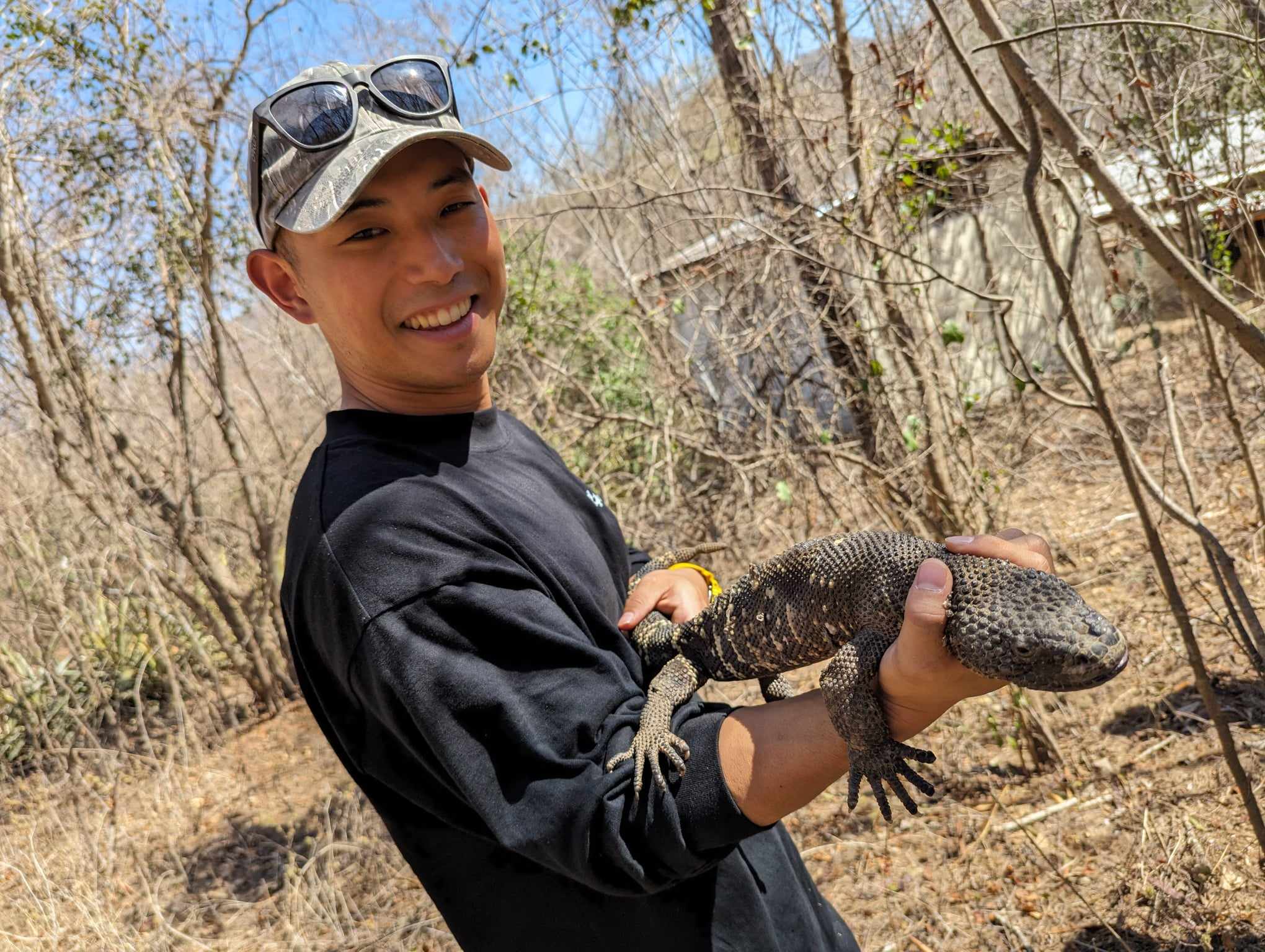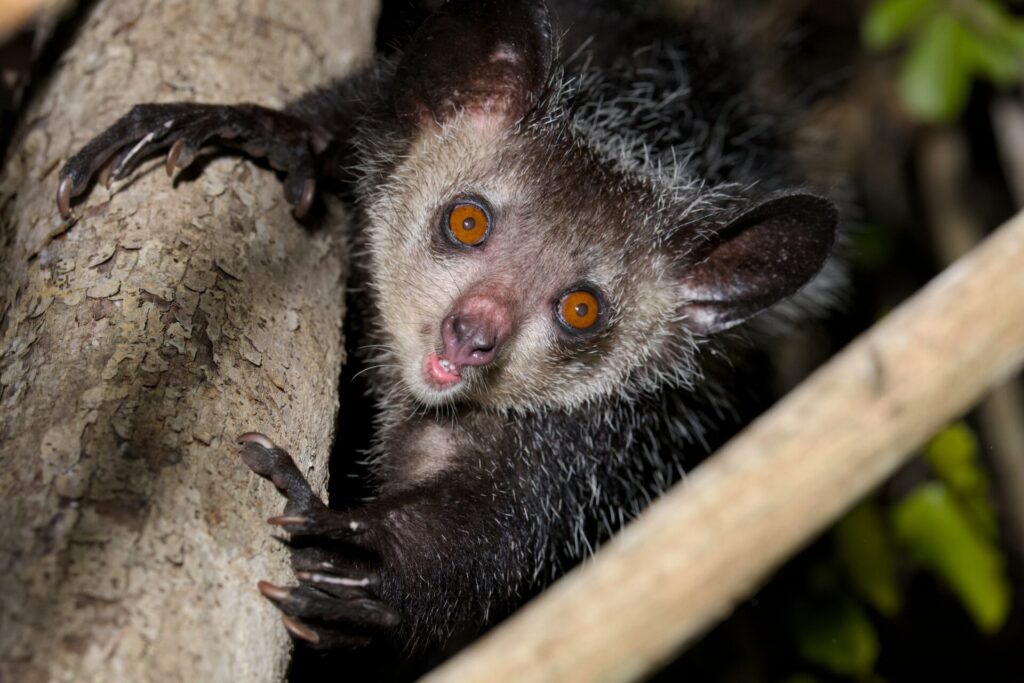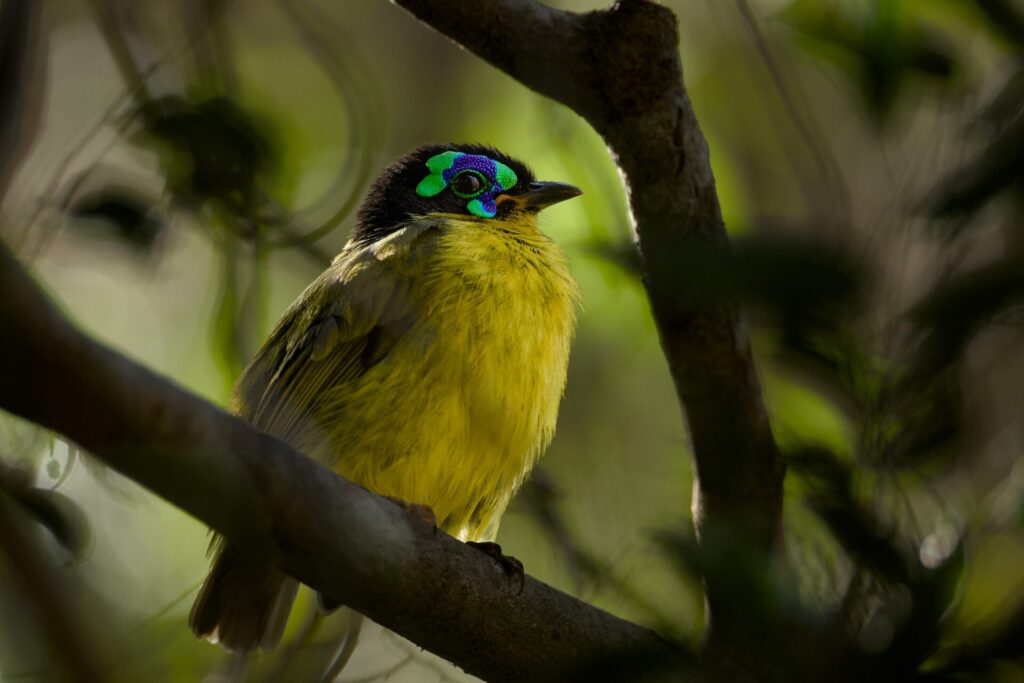Wataru HIMENO– Author –
 Wataru HIMENO
Wataru HIMENO
Wataru HIMENO, born on August 8, 1995.
From a young age, I was passionate about insect collecting, with a particular fascination for the impressive Japanese glass lizard, which sparked my love for reptiles and amphibians. After graduating from university, he volunteered in Ecuador, where he encountered the term "herping." Upon returning to Japan, I worked at a travel agency, promoting herping and started a blog called WildHerping. After leaving the travel agency, he founded WildHerping & Co. to promote environmental conservation and has since been dedicated to the protection of nature and wildlife.
-

Announcement of New Release – “Where the Leaf-Tailed Gecko Lives”
Sample of the cover I am pleased to announce the release of my new wildlife book,“Where the Leaf-Tailed Gecko Lives,” created in collaboration with my local partners in Madagascar. This field guide is filled with photographs I captu... -

Wildlife Observed at Ambre Mountain National Park
This is a report on the wildlife we observed in the Ambre Mountain (Montagne d’Ambre) region of Northern Madagascar. Ambre Mountain is located at a slightly high altitude, with the park entrance being around 1,000m. Because of this,... -

An article about herping in Okinawa has been published by Responsible-Herpetoculture Journal
I’m honored to share that my article “Herping in Okinawa” has been published in the latest issue of the Responsible Herpetoculture Journal, one of the most respected amphibian and reptile magazines in the world. I am especially gra... -

How to Find Wild Chameleons: 4 Proven Methods for Herping in Madagascar
Looking for wild chameleons but not sure where to start?Chameleons are masters of camouflage—changing color, hiding among leaves, and moving skillfully through trees with their unique hands, feet, and tail. Because of this, spotting them... -

The smallest primate in the world|Berthe’s mouse lemur
Berthe’s mouse lemur (Microcebus berthae) Madagascar is home to a fascinating variety of lemurs, and among them, the smallest is the Mouse lemur (Microcebusspp.). These tiny primates emerge at night from tree hollows and other hidin... -

How to Observe a Wild Aye-aye
What Is an Aye-aye? One of the World’s Rarest Primates The aye-aye is often listed among the world’s 25 most endangered and unusual primates.Although it is exclusive to Madagascar, tourist sites on the island offer easy sightings through... -

The Asity – Madagascar’s Masked Jewel
Schlegel’s Asity (Philepitta schlegeli) – Male One of my favorite birds is the Asity, a small yet striking bird endemic to Madagascar. There are only two species in the world, both found exclusively on this island. What makes t... -

How to Find Wild Tomato Frogs and Their Natural Habitat in Madagascar
The Tomato Frog (Dyscophus antongilii), Introduction The Tomato Frog (Dyscophus antongilii), known for its vivid red, rounded body, is one of the most striking amphibians in Madagascar. I recently went searching for this species in the w... -

The Morphs of the Madagascar Paradise Flycatcher
Madagascar Paradise Flycatcher (Terpsiphone mutata) Among the many birds found throughout Madagascar, one of the most widespread and relatively easy to observe is the Madagascar Paradise Flycatcher (Terpsiphone mutata). Male Fe... -

How to Observe Wild Satanic Leaf-Tailed Geckos in Madagascar | Habitat and Field Guide
Satanic Leaf-Tailed Gecko (Uroplatus phantasticus) Madagascar is home to many unique reptiles, including the Satanic Leaf-Tailed Gecko (Uroplatus phantasticus), a highly sought-after species due to its beautiful patterns and elusive natu...










